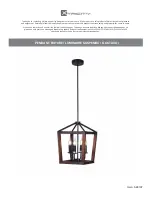
Set-up procedure
Determine test loop location
Step 1.
The test loop should be placed within the intended area to be looped and positioned at the
same height at which the final loop will be installed.
Step 2.
Take note of the construction of the area to be looped and ensure the test loops cover all
the various structural elements. The test loops should cross over any steel beams or large
ducts that may be present. If the area to be looped is very large, for example a large
theatre, repeat the test in multiple areas throughout the space to account for variances in
building structure.
Step 3.
Complete a separate site assessment procedure, or a metal loss test form for each test
area and note the location of each test.
Perimeter Loop layout test loop
If a
perimeter loop
is going to be installed, then test with the actual intended loop layout.
Driver set-up
A.
Connect the power supply (or battery), signal source (phone or MP3 player) and loop wire.
B.
If using a multimeter this should be connected in series, using the high current connections
and set to the AC current option.
C.
Switch on the power to the driver and check that the power LED illuminates, the Input LED
will also light up for a few seconds as the circuit settles.
Signal level test set-up and test positions
Set the signal input to sinewave or combination and turn up the volume of the signal input until the
input LED lights light up on the driver.
NOTE: continuous prolonged use of a sinewave signal (longer than 10 minutes) will cause the
output current to drop slightly, however this should not affect the output level by more than 1dB.
The combination signal avoids this.The current LED should also be on at this stage.
For
perimeter loop
tests, readings should be
taken in the middle, edge and near to at least
one of the corners of the loop, to measure the
maximum variation in signal strength across the
loop.
All testing positions should be at least 1m (3ft)
from the wires, as the signal level decreases near
to the wire, making readings unreliable.
Measurement height for the test meters should be at 1.2m (4ft) from the floor (typical seated head
height), whether the test loop is on the floor or ceiling.
All measurements must be carried out with the Loopworks Measure R1 or FSM positioned
vertically.
HLS-2D Metal Loss Test Procedure
Page 3
Additional considerations:- The presence of fixed metal furniture and/or tiered seating may define
the positions where a loop can be practically installed. If a perimeter loop cannot be used, the size
of the figure of eight loops should be determined by the fixed features, e.g. loop widths should
cover 2-3 steps with a 1 step gap.




























